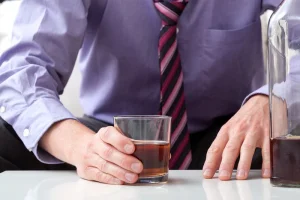Even though you may think this time is different, if your drinking and drug use has gotten out of hand in the past, it is unlikely to be different now. An individual who feels guilt often uses substances to ease their guilt, which can lead to AVE. Guilt is a difficult emotion for someone to bear, one that can constantly replay in their minds, leading them to use substances again. Relapse prevention initially evolved as a calculated response to the longer-term treatment failures of other therapies.
Emerging topics in relapse and relapse prevention

According to Marlatt, this cascading effect leads to a relapse that occurs due to a cascading effect that entails several issues. One of the most notable developments in the last decade has been the emergence and increasing application of Mindfulness-Based Relapse Prevention (MBRP) for addictive behaviours. Although many developments over the last decade encourage confidence in the RP model, additional research is needed to test its predictions, limitations and applicability. In particular, given recent theoretical revisions to the RP model, as well as the tendency for diffuse application of RP principles across different treatment modalities, there is an ongoing need to evaluate and characterize specific theoretical mechanisms of treatment effects. The last decade has seen numerous developments in the RP literature, including the publication of Relapse Prevention, Second Edition [29] and its companion text, Assessment of Addictive Behaviors, Second Edition [30].
Cognitive Behavioural model of relapse
However, there are some common early psychological signs that a relapse may be on the way. If you are worried that you might be headed for a relapse, you don’t have to wait until it happens to reach out for help. A relapse is the result of a series of events that occur over time, according to psychologist and researcher Alan Marlatt, Ph.D.
- Learning what one’s triggers are and acquiring an array of techniques for dealing with them should be essential components of any recovery program.
- Examples of high-risk contexts include emotional or cognitive states (e.g., negative affect, diminished self-efficacy), environmental contingencies (e.g., conditioned drug cues), or physiological states (e.g., acute withdrawal).
- A relapse can be a disheartening setback when you use a substance, such as alcohol or marijuana, especially after promising yourself you wouldn’t.
- Here’s how we can face our triggers with less reactivity so that we can get on with our lives.
Balanced lifestyle and Positive addiction
It was noted that in focusing on Marlatt’s relapse taxonomy the RREP did not comprehensive evaluation of the full RP model [121]. Nevertheless, these studies were useful in identifying limitations and qualifications of the RP taxonomy and generated valuable suggestions [121]. Additionally, the support of a solid social network and professional help can play a pivotal role. Encouragement and understanding from friends, family, or support groups can help individuals overcome the negative emotional aftermath of the AVE. The Abstinence Violation Effect is a psychological phenomenon that occurs when a person experiences relapse after attempting to abstain from drug or alcohol use.

The verdict is strongest for interventions focused on identifying and resolving tempting situations, as most studies were concerned with these24. Given the abstinence focus of many SUD treatment centers, studies may need to recruit using community outreach, which can yield fewer participants compared to recruiting from treatment (Jaffee et al., 2009). However, this approach is consistent with the goal of increasing treatment utilization by reaching those who may not otherwise present to treatment. Alternatively, researchers who conduct trials in community-based treatment centers will need to obtain buy-in to test nonabstinence approaches, which may necessitate waiving facility policies regarding drug use during treatment – a significant hurdle. In the 1980s and 1990s, the HIV/AIDS epidemic prompted recognition of the role of drug use in disease transmission, generating new urgency around the adoption of a public health-focused approach to researching and treating drug use problems (Sobell & Sobell, 1995).
4. Current status of nonabstinence SUD treatment
In conclusion, the abstinence violation effect is a psychological effect that impacts those in recovery, as well as those who are focused on making more positive behavioral choices in their lives. By reframing lapses as learning opportunities and teachable moments, cultivating self-compassion, and seeking support, individuals can navigate these challenges more effectively, increasing their chances of leading a healthier lifestyle. Gordon as part of their cognitive-behavioral model of relapse prevention, and it is used particularly in the context of substance use disorders. In psychotherapy, an abstinence violation effect refers to the negative cognitive and affective reactions one experiences after returning to substance use after a period of abstinence.
We identify a clear gap in research examining nonabstinence psychosocial treatment for drug use disorders and suggest that increased research attention on these interventions represents the logical next step for the field. The most promising pharmacogenetic evidence in alcohol interventions concerns the OPRM1 A118G polymorphism as a moderator of clinical response to naltrexone (NTX). Moreover, 87.1% of G allele carriers who received NTX were classified as having a good clinical outcome at study endpoint, versus 54.5% of Asn40 homozygotes who received NTX. (Moderating effects of OPRM1 were specific to participants receiving medication management without the cognitive-behavioral intervention [CBI] and were not evident in participants receiving NTX and CBI). A smaller placebo controlled study has also found evidence for better responses to NTX among Asp40 carriers [94]. One study found that the Asp40 allele predicted cue-elicited craving among individuals low in baseline craving but not those high in initial craving, suggesting that tonic craving could interact with genotype to predict phasic responses to drug cues [97].
- Specifically, we focus on recent, representative findings from studies evaluating candidate single nucleotide polymorphisms (SNPs) as moderators of response to substance use interventions.
- One of the most important efficacy-enhancing strategies employed in RP is the emphasis on collaboration between the client and therapist instead of a more typical “top down” doctor-patient relationship.
- In psychotherapy, an abstinence violation effect refers to the negative cognitive and affective reactions one experiences after returning to substance use after a period of abstinence.
- These data suggest that non-disordered drug use is possible, even for a substantial portion of individuals who use drugs such as heroin (about 45%).
- There may be an internal conflict between resisting thoughts about drugs and compulsions to use them.
Indeed, a prominent harm reduction psychotherapist and researcher, Rothschild, argues that the harm reduction approach represents a “third wave of addiction treatment” which follows, and is replacing, the moral and disease models (Rothschild, 2015a). The recently introduced dynamic model of relapse [8] takes many of the RREP criticisms into account. Additionally, the revised model has generated enthusiasm among researchers and clinicians who have observed these processes in their data and their clients [122,123]. Still, some have criticized the abstinence violation effect model for not emphasizing interpersonal factors as proximal or phasic influences [122,123]. Other critiques include that nonlinear dynamic systems approaches are not readily applicable to clinical interventions [124], and that the theory and statistical methods underlying these approaches are esoteric for many researchers and clinicians [14]. Rather than signaling weaknesses of the model, these issues could simply reflect methodological challenges that researchers must overcome in order to better understand dynamic aspects of behavior [45].
- Relapse poses a fundamental barrier to the treatment of addictive behaviors by representing the modal outcome of behavior change efforts [1-3].
- One study found that smokers’ attentional bias to tobacco cues predicted early lapses during a quit attempt, but this relationship was not evident among people receiving nicotine replacement therapy, who showed reduced attention to cues [60].
- Such positive outcome expectancies may become particularly salient in high-risk situations, when the person expects alcohol use to help him or her cope with negative emotions or conflict (i.e., when drinking serves as “self-medication”).
Empirical findings relevant to the RP model
Last modified: June 13, 2024
